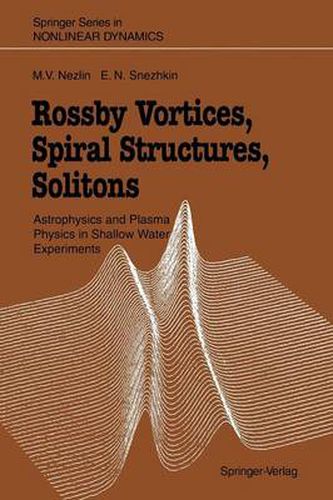Readings Newsletter
Become a Readings Member to make your shopping experience even easier.
Sign in or sign up for free!
You’re not far away from qualifying for FREE standard shipping within Australia
You’ve qualified for FREE standard shipping within Australia
The cart is loading…






This title is printed to order. This book may have been self-published. If so, we cannot guarantee the quality of the content. In the main most books will have gone through the editing process however some may not. We therefore suggest that you be aware of this before ordering this book. If in doubt check either the author or publisher’s details as we are unable to accept any returns unless they are faulty. Please contact us if you have any questions.
This book can be looked upon in more ways than one. On the one hand, it describes strikingly interesting and lucid hydrodynamic experiments done in the style of the good old days when the physicist needed little more than a piece of string and some sealing wax. On the other hand, it demonstrates how a profound physical analogy can help to get a synoptic view on a broad range of nonlinear phenomena involving self-organization of vortical structures in planetary atmo spheres and oceans, in galaxies and in plasmas. In particular, this approach has elucidated the nature and the mechanism of such grand phenomena as the Great of galaxies. A number of our Red Spot vortex on Jupiter and the spiral arms predictions concerning the dynamics of spiral galaxies are now being confirmed by astronomical observations stimulated by our experiments. This book is based on the material most of which was accumulated during 1981-88 in close cooperation with our colleagues, experimenters from the Plasma Physics Department of the Kurchatov Atomic Energy Institute (S. V. Antipov, A. S. Trubnikov, AYu. Rylov, AV. Khutoretsky) and astrophysics theoreticians from the Astronomical Council of the USSR Academy of Sciences (AM. Frid man) and from the Volgograd State University (AG. Morozov). To all of them we wish to express our gratitude. Whenever we speak of our experiments , the participation of the entire team is implied.
$9.00 standard shipping within Australia
FREE standard shipping within Australia for orders over $100.00
Express & International shipping calculated at checkout
This title is printed to order. This book may have been self-published. If so, we cannot guarantee the quality of the content. In the main most books will have gone through the editing process however some may not. We therefore suggest that you be aware of this before ordering this book. If in doubt check either the author or publisher’s details as we are unable to accept any returns unless they are faulty. Please contact us if you have any questions.
This book can be looked upon in more ways than one. On the one hand, it describes strikingly interesting and lucid hydrodynamic experiments done in the style of the good old days when the physicist needed little more than a piece of string and some sealing wax. On the other hand, it demonstrates how a profound physical analogy can help to get a synoptic view on a broad range of nonlinear phenomena involving self-organization of vortical structures in planetary atmo spheres and oceans, in galaxies and in plasmas. In particular, this approach has elucidated the nature and the mechanism of such grand phenomena as the Great of galaxies. A number of our Red Spot vortex on Jupiter and the spiral arms predictions concerning the dynamics of spiral galaxies are now being confirmed by astronomical observations stimulated by our experiments. This book is based on the material most of which was accumulated during 1981-88 in close cooperation with our colleagues, experimenters from the Plasma Physics Department of the Kurchatov Atomic Energy Institute (S. V. Antipov, A. S. Trubnikov, AYu. Rylov, AV. Khutoretsky) and astrophysics theoreticians from the Astronomical Council of the USSR Academy of Sciences (AM. Frid man) and from the Volgograd State University (AG. Morozov). To all of them we wish to express our gratitude. Whenever we speak of our experiments , the participation of the entire team is implied.